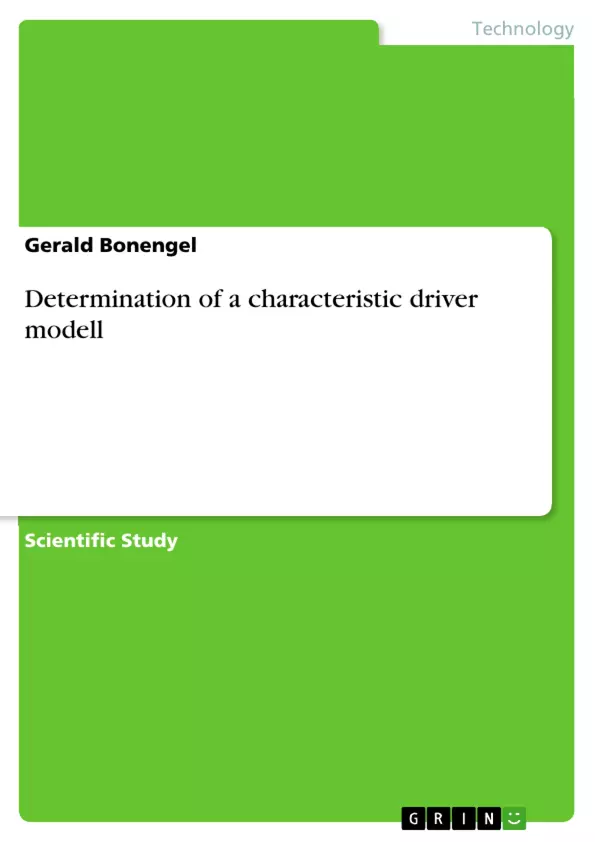There are various concepts to reduce the noxious emission in the area of mobility. For example actually the expansion of the electro-mobility, via hybrid drive to the point of fuel made of biomass is explored. To assess these concepts the operating conditions and operating areas of the vehicles in day to day use are crucial, as the concepts differ explicitly with regard to the range, power and driving characteristics. To be able to select the proper concept a driver’s model has to be defined, as the economical key data’s are in a strong correlation of this model. Via an everyday operating behavior performance data’s can be created, which can be used in “Hardware in the Loop” (HIL) engine test bench simulations.
The analyzed rides will be characterized with time-weighted and motor units as well as the allocations of the accessed engine torques and the engine rpm.
driver’s model;
Keywords: Hardware in the Loop; driving characteristics
Table of Contents
- I. INTRODUCTION
- II. MATERIALS AND METHODS
- A. Engine torque
- III. EXECUTION OF THE TEST RUNS
- IV. RESULTS
- A. Engine torque
- B. Speed
- C. Road transport infrastructure
Objectives and Key Themes
This study aimed to create a driver model based on real-world driving data, which can be used in "Hardware in the Loop" (HIL) engine test bench simulations to evaluate different vehicle concepts. The project focused on analyzing typical driving behaviors of everyday drivers, considering a variety of traffic situations and routes. The research sought to determine how specific driving parameters, such as engine torque, speed, and dwell time, could inform the development and selection of optimal engine concepts for different driving conditions.- The creation of a driver model based on real-world data.
- Analysis of everyday driving behaviors, encompassing traffic routes and situations.
- Determining key driving parameters like engine torque, speed, and dwell time.
- Assessing the suitability of different engine concepts for daily use.
- Providing insights for the development and improvement of vehicle concepts.
Chapter Summaries
I. INTRODUCTION
This chapter introduces the concept of "Hardware in the Loop" (HIL) simulations and explains their significance in evaluating vehicle concepts early in the development process. It highlights the importance of driver models in HIL simulations for capturing realistic driving behaviors.II. MATERIALS AND METHODS
This chapter outlines the methodology used to gather and analyze driving data. It describes the vehicle used in the study, the data recording system, and the specific values collected. The chapter also discusses the calculations performed on the collected data, including engine measurements and driving characteristics.III. EXECUTION OF THE TEST RUNS
This chapter elaborates on the execution of the test runs, emphasizing the importance of real-world driving routes and conditions. It describes the various traffic situations and routes considered, along with the classification of trip purposes. The chapter also details the data analysis process and the specific values extracted from the recorded data.IV. RESULTS
This chapter presents the results of the data analysis, focusing on the frequency distribution of engine torque, speed, and dwell time. It explores the relationship between driving patterns and traffic infrastructure, highlighting the significance of different driving conditions. The chapter also includes a table analyzing road transport infrastructure based on the collected data.Keywords
This study focuses on key themes such as driver modeling, real-world driving behavior analysis, engine performance optimization, and "Hardware in the Loop" simulations. Key concepts include engine torque, speed, dwell time, and the application of the collected data in evaluating different vehicle concepts. These findings have implications for the development of more efficient and practical vehicle systems for everyday use.- Citation du texte
- Gerald Bonengel (Auteur), 2012, Determination of a characteristic driver modell, Munich, GRIN Verlag, https://www.grin.com/document/208434



